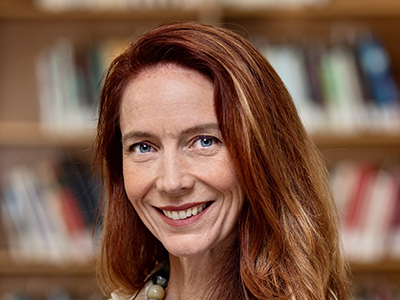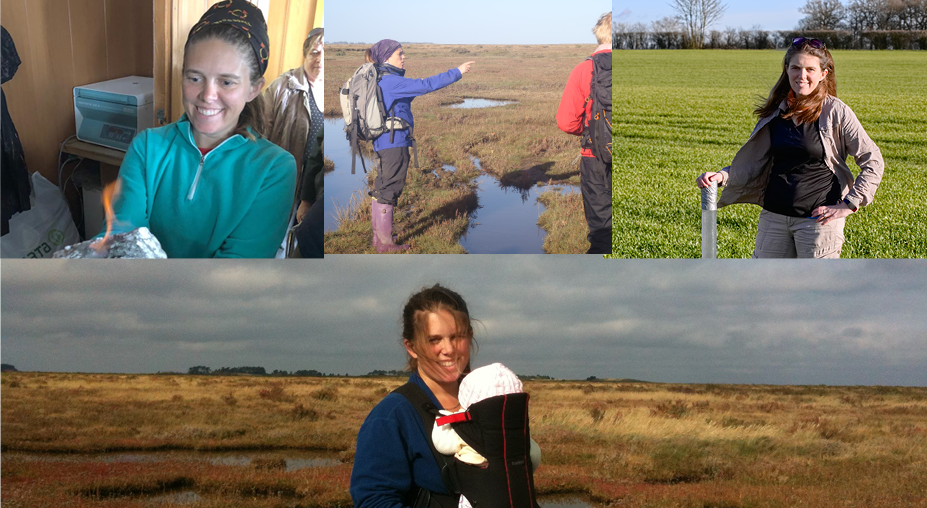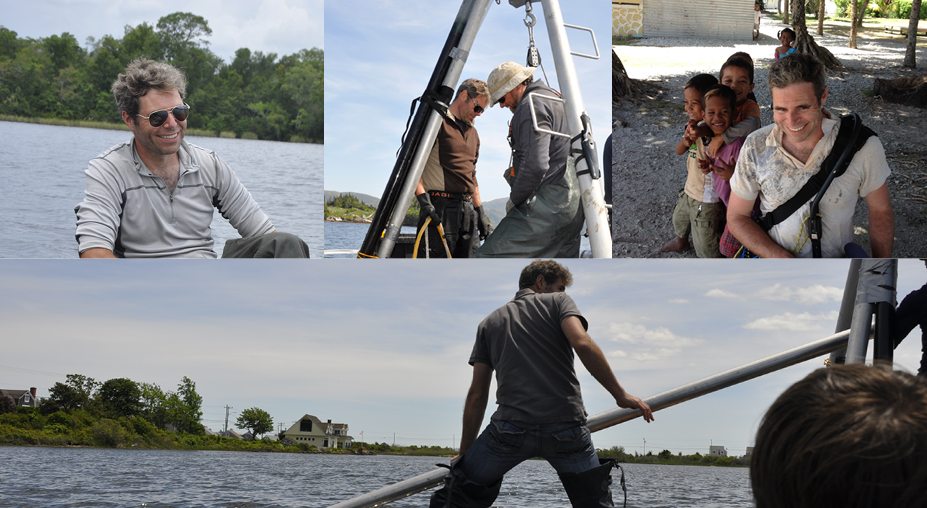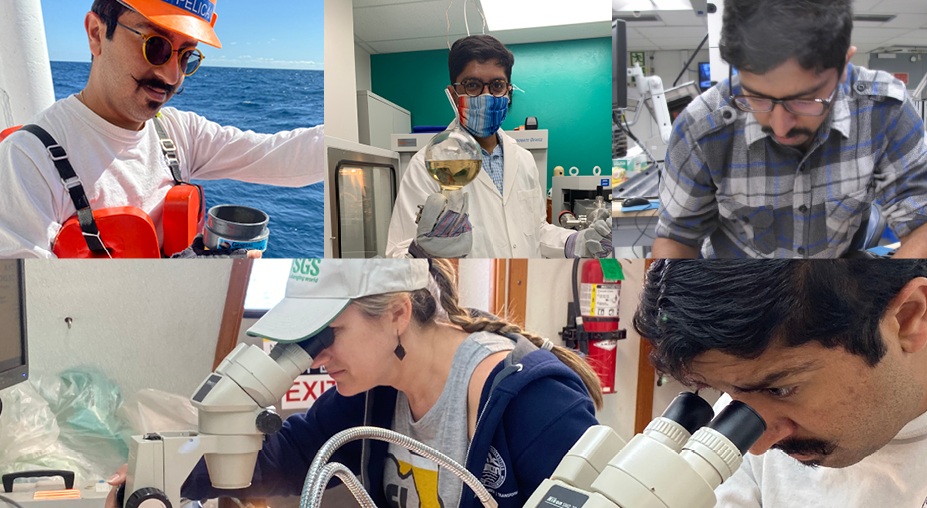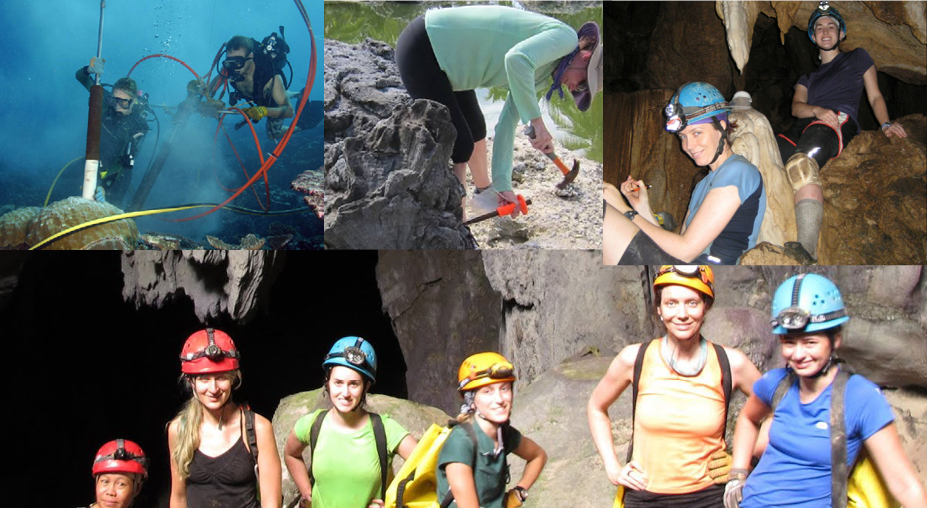Paleoceanography and Paleoclimatology Honorees
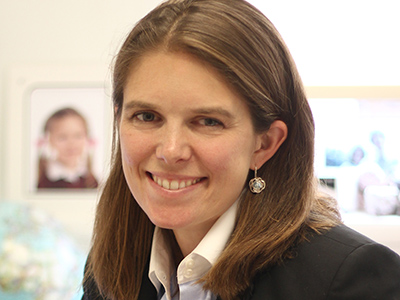
Citation
Few paleoceanographers have brought as much diversity, creativity, and rigor to studies of ancient climates, oceans, and life as Alexandra (Sasha) Turchyn has. Marine biogeochemical cycles and related proxies for evolving ocean chemistry and climate lie at the heart of this research, and with consistent rigor and innovation, she develops, tests, and applies creative isotopic solutions to essential problems.
Sasha emerged as a promising paleoceanographer while a student at Harvard, where she began path-defining studies of coupled sulfur and oxygen isotope data that would become a hallmark of her career. Through novel measurements of oxygen isotopes in marine barite, she opened a new window to studies of pyrite oxidation that specifically gave us a compelling way to extend back ice volume and sea level estimates by millions of years. She then adapted the technique to illuminate, in novel ways, how sulfide oxidation can link explicitly to patterns and controls for organic carbon burial.
More recently, she spearheaded an essential comparison of data from barite and carbonate-associated sulfate (CAS). Among the greatest hits from her group, a pioneering microanalytical exploration of CAS in forams exposed a fundamental shift in pyrite burial from shallow seas and shelves to the open ocean corresponding to sea level change and tectonic reorganization as the Himalayan arc first collided with Asia.
With far-reaching curiosity, Sasha began exploring the sulfur and oxygen isotope relationships of microbial sulfate reduction in part to elevate further the underexplored utility of these coupled records in paleoceanography. It is also no surprise, given Sasha’s passion for the fidelity of proxy records, that she became a leader in studies of calcium isotopes and carbonate formation and preservation in marine sediments. Among the many successes, an innovative application of machine learning exposed the global flux of carbonate precipitated from pore waters as a weaker lever on the global carbon isotope mass balance than previously imagined. Sasha and colleagues extrapolated all this important work in yet another direction by confirming that subducted carbonates are a major source of carbon dioxide emissions at volcanic arcs.
These highlights and her many others prove what can happen when a powerful mix of geobiology, ecology, microbiology, biogeochemistry, and paleoceanography is nested within the equally powerful mind of a tireless researcher. In all this, it is hard to miss that she is also an outstanding mentor, and her service to the scientific community deserves our praise and gratitude. Sasha Turchyn is a most deserving recipient of the Willi Dansgaard Award.
—Tim Lyons, University of California, Riverside
Response
I am honored to be selected to receive this year’s Willi Dansgaard Award and humbled to be placed in the same company as those who received it before me. I have been grateful to be part of the Paleoceanography and Paleoclimatology community throughout my career. As Tim notes, while much of my research has veered from pure paleoceanography, I remain inspired by understanding the evolution of Earth’s surface environment and how this is recorded in minerals and rocks.
I am deeply grateful to Tim Lyons for nominating me for this award and to my Ph.D. supervisor, Dan Schrag, who sparked my interest in paleoceanography, and my postdoc supervisor, Don DePaolo, who helped me think “outside the box” about the chemical evolution of the oceans.
I have long thought that paleoceanographic records are only as good as the sediments on which they are built, and much of my work has been spent interrogating sedimentary environments to better interpret the environmental, isotopic, and geochemical signals that may be recorded. This is not always a popular line of work, but we have at our disposal the analytical tools—and creative powers of thought—to figure out how our oceans and climate evolved. At its heart, every mineral and every rock tell a story, although not all stories are as simple as they first appear. I urge our community to continue to question our assumptions and push forward new ideas so we can determine the stories the sedimentary record is telling us about paleoceanography and paleoclimatology.
I am blessed with outstanding colleagues and friends, too numerous to name, whose steady support has seen me through academic hurdles, and who have celebrated with me joys and successes. I am blessed with extraordinarily patient coauthors and editors, who have given me extra space and time to claw my head back above water, too often. I have had the privilege to work with exceptional Ph.D. and master’s students, who taught me more than I could have imagined and who are foundational to the body of work for which I have received this award. I remain profoundly grateful for FIBU; you keep me grounded, entertained, and intellectually stimulated. Finally, I am blessed with an incredibly supportive family: To my husband and daughters, I thank you for making me a better scientist by reminding me about the need for a healthy work-life balance and for keeping me sharp. I am truly a fortunate person.
—Alexandra Turchyn, University of Cambridge, Cambridge, U.K.
Field Photos
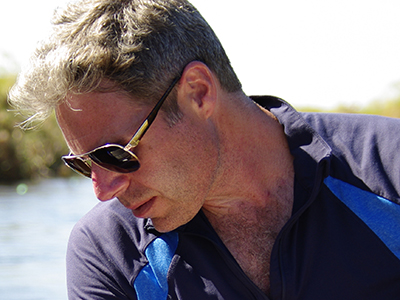
Citation
Richard Sullivan’s research has provided a number of meaningful contributions to the scientific literature, but it most clearly sets an example of how to incorporate proxies, contemporary measurements, and model results into coherent, well-written manuscripts. To do so, Richard brings together a diverse group of collaborators, with experts ranging from the fields of sedimentology and micropaleontology to climate modeling, to deliver a holistic interpretation of the proxy record. The future of paleoclimate research is dependent on this style of work.
Within this study, Richard applied a novel sediment-based proxy (calcite rafts) to evaluate hydroclimate evidence preserved in a coastal sinkhole (a unique karstic environment). Current studies using this proxy are limited, and thus Richard has significantly contributed to its development, including thoroughly exploring its utility within this sinkhole setting. He posed thoughtful evaluation of the proxy within his publication, producing a high-resolution record of hydroclimate variability in a region that has limited records.
Through Richard’s careful proxy work and sedimentological interpretation, he identified that centennial-scale variability of calcite raft deposition was not simply linked to meridional displacements of the Atlantic Intertropical Convergence Zone (ITCZ), which is often used to explain past records of hydroclimate within the tropical and subtropical North Atlantic. Instead, Richard linked centennial-scale variability in calcite raft deposition to the North Atlantic Subtropical High (NASH), consistent with current research on the northern Intra-American Seas that suggests that the NASH dominates hydroclimate variability in the region on shorter timescales.
Richard then explored reanalysis products, observations, and simulations with the Community Earth System Model (CESM) to explore how the NASH impacts regional hydroclimate variability, and to characterize the relationship of longer-timescale NASH variability to modes of large-scale climate. This effort identified a hydroclimate dipole in the western North Atlantic, linked regionally to variability in the western edge of the NASH, and on large scales to the tropical and North Pacific. These results are critical for our understanding of the drivers of rainfall in the region on longer timescales, improving our ability to interpret past records, and future projections, of hydroclimate change.
Publishing robust, holistic, and thoughtful paleoclimate reconstructions remains difficult—Richard did an exceptional job combining a novel proxy, with his expanding knowledge of climate variability, to develop this study. It is an important example of the utility that comes from combining proxy and model interpretations within paleoclimate research and is well deserving of the Harry Elderfield Student Paper Award.
—Sloan Coats, University of Hawaiʻi at Mānoa, Honolulu
Response
First, let me extend my deepest thanks to Dr. Sloan Coats for nominating my work and to those others who supported that nomination. Furthermore, I am deeply appreciative of the AGU Paleoceanography and Paleoclimatology Award Committee for selecting me for this year’s honor. To say that I am deeply humbled would be an understatement. That said, this honor is hardly mine alone. My research into Holocene hydroclimate variability in the northwestern Atlantic would not have been possible without the advice and support of my coauthors and colleagues, who at times have occupied the various roles of mentors and friends. I owe a great deal of my scientific growth over the past several years to their support, collaboration, and honesty.
My academic path has been far from direct, involving hiatuses that afforded me opportunities to acquire new skills and abilities as well as occasions to engage with communities most threatened by hydroclimate volatility. Understanding the nature and drivers of this volatility is crucial for mitigating its impacts and identifying the regions that face the greatest risk. Through the combination of sediment-based paleoproxy analysis, numerical modeling, and modern climatology, the results of my Ph.D. research have brought middle and late Holocene hydroclimate volatility into sharper focus. Moreover, the growing body of paleoclimate reconstructions provides important insight into the ocean-atmosphere processes that modulate regional climatic shifts on the temporal scales commensurate with climate change. Though much work remains, I am honored to have meaningfully contributed to these endeavors, grateful to the support of my peers, and eager to continue exploring the past and future of our dynamic climate.
—Richard Sullivan, Texas A&M University at Galveston
Field Photos
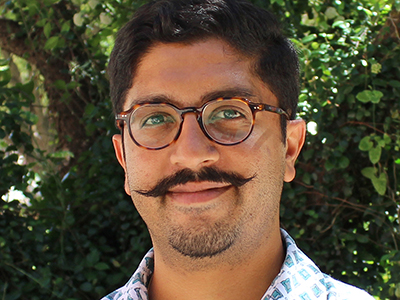
Citation
Dr. Kaustubh Thirumalai is recognized by the global Earth and space sciences community for his tremendous dedication to advancing Earth and space sciences, specifically his contributions to problems of fundamental importance in paleoceanography and paleoclimatology. His creative use of numerical modeling and rigorous statistical quantification of uncertainties in observational data has greatly advanced the application of foraminiferal proxies for paleoclimate reconstructions. Kau has been a leader in foraminiferal-based paleoclimate research, in particular the application of individual foraminiferal analysis (IFA). He has made important contributions toward the understanding of climate variability at suborbital scales by applying rigorous statistical analysis to IFA data, particularly the reconstruction of past regimes of El Niño–Southern Oscillation (ENSO) and recognizing the role of El Niño in forcing extreme temperatures in tropical monsoonal Asia. Using model simulations, Kau and colleagues have shown the emergence of a mode of climate variability that can generate unprecedented sea surface temperature and rainfall fluctuations across the Indian Ocean. Kau has also demonstrated a linkage between centennial variability in North Atlantic surface circulation and continental hydroclimate.
Born and educated in India, Kau’s scientific interests have been deeply imprinted by the importance of monsoons, a climate phenomenon vital to his home country. Through his studies and early academic career in the United States, Kau has built bridges between the international scientific community and Indian colleagues with the aim of using paleoclimate data for helping societies prepare for an uncertain climate future.
—Yair Rosenthal, Rutgers University, New Brunswick, N.J.
Response
I am deeply honored to have been named as the 2022 recipient of the AGU Nanne Weber Early Career Award. I am grateful to Yair for the generous citation and for supporting and believing in my research. In addition, I am very thankful to the others who nominated me and to the Paleoceanography and Paleoclimatology award committee for its service.
As a chemical engineering student in Surathkal, India, I did not imagine that I would ever be in a position to pursue scientific research as a career. I count myself very fortunate and privileged to have had the opportunities and mentorship that introduced me to the fields of paleoceanography and climate science, which continue to fascinate and motivate me today. As a transplant into the field but also a geographical transplant, I am very grateful to the broader paleoclimate community for welcoming me in every sense of the word.
Ultimately, I feel privileged and very lucky to have collaborators, mentors, mentees, and “science friends” across multiple institutions around the globe who make pursuing research in our field an absolute joy. I am particularly grateful to my group and colleagues at the University of Arizona. Finally, I owe a deep token of gratitude to my family for constantly believing in me and being a source of unwavering support. I hope to continue addressing major problems in paleoceanography and paleoclimatology and spreading awareness about their critical relevance to ongoing and future climate change.
—Kaustubh Thirumalai, University of Arizona, Tucson
Field Photos
